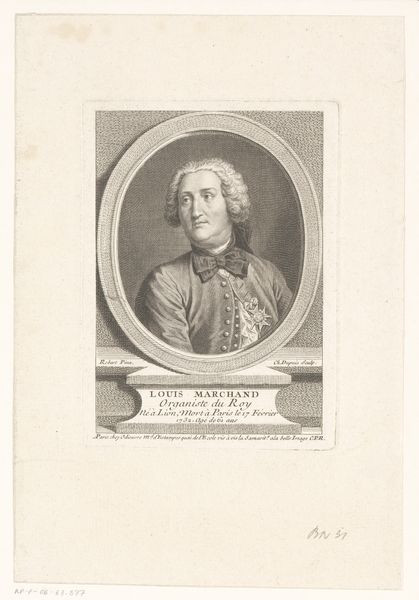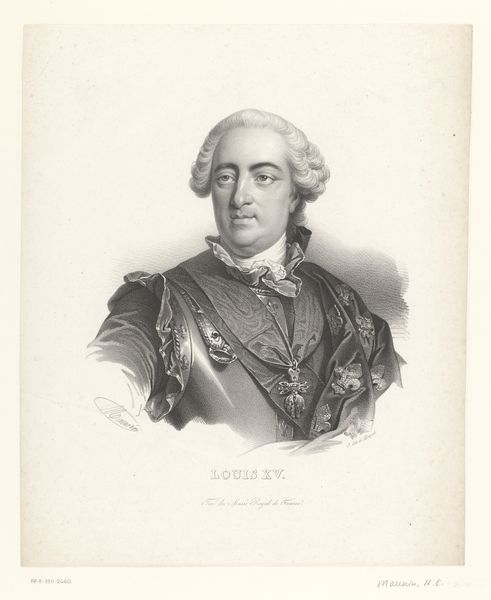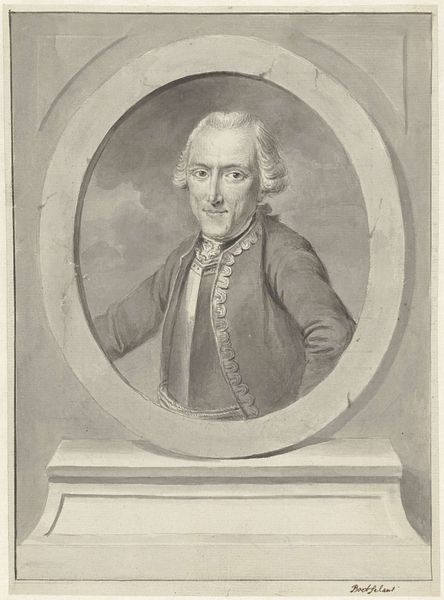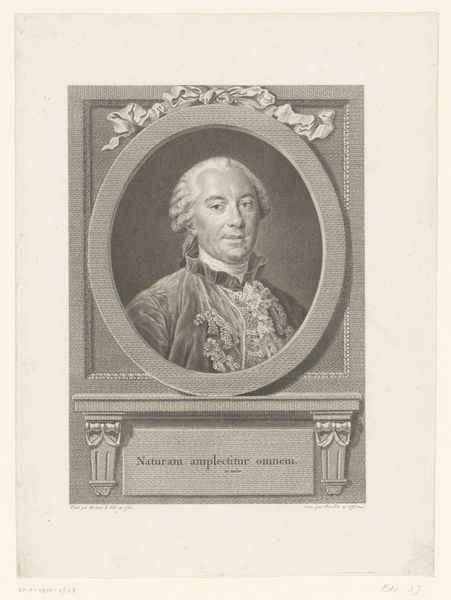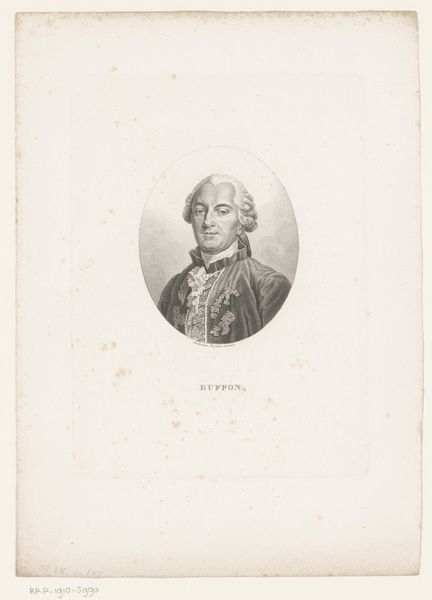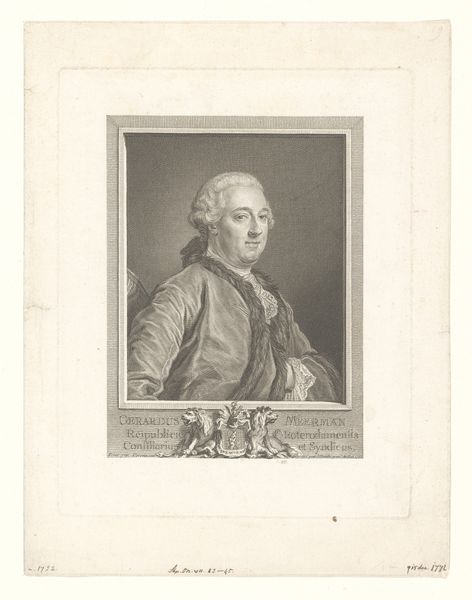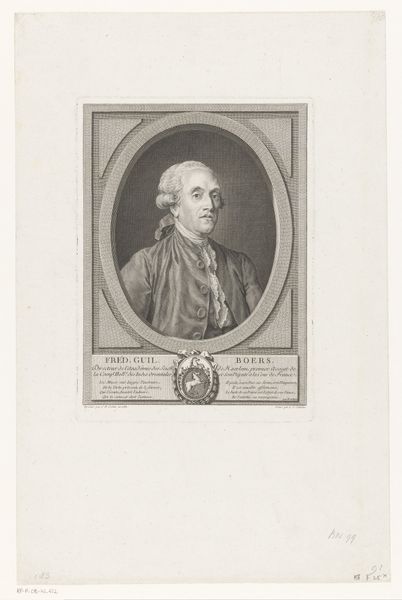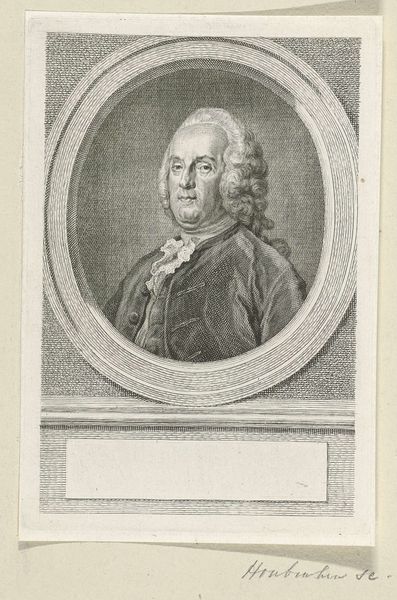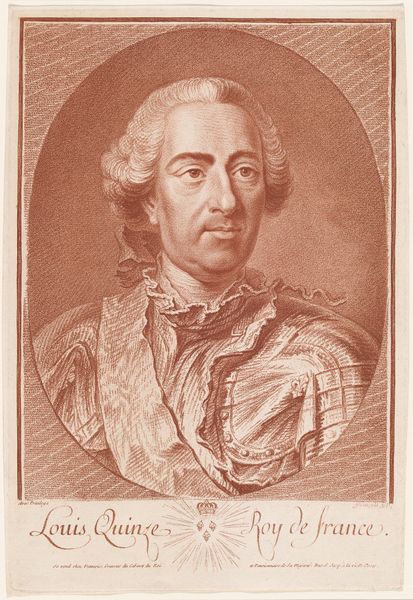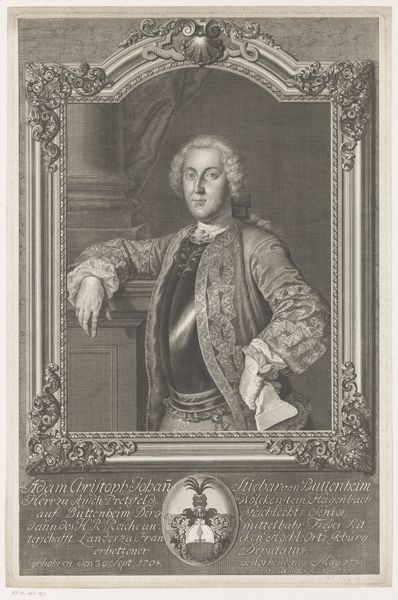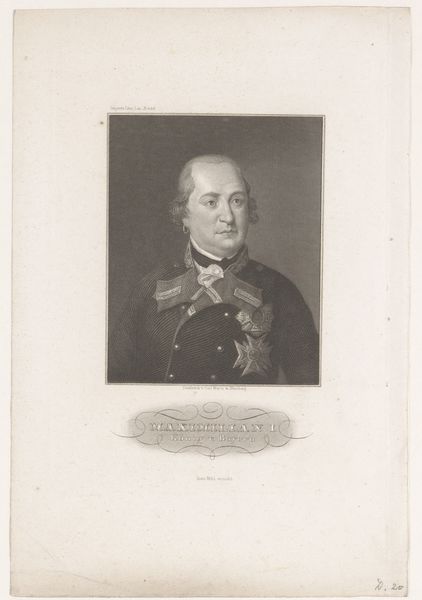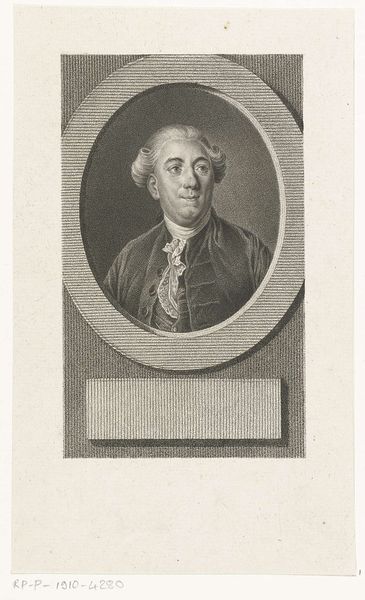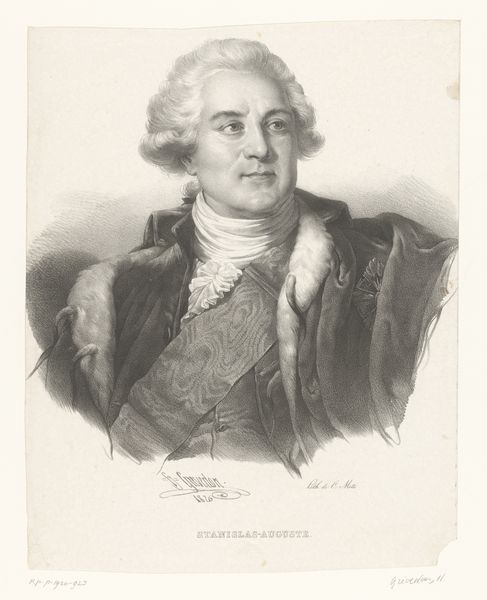
Dimensions: height 508 mm, width 391 mm
Copyright: Rijks Museum: Open Domain
Editor: Here we have a print, likely an engraving, titled "Portret van Lodewijk XV," or Portrait of Louis XV, dating from around 1770, by Louis Marin Bonnet. The sepia tones give it a feeling of looking back through time. What historical context can you give us for this portrait? Curator: Absolutely. Portraits like these played a significant role in shaping the public image of the monarchy. Consider the reign of Louis XV— a period of increasing social and economic tension leading up to the French Revolution. This image, presented in an oval frame with geometrical forms, becomes a highly controlled presentation. What does the image *tell* the public? Editor: Well, it's clearly intended to project power and legitimacy. The fleur-de-lis on his garment and the regal bearing… it’s all very deliberate. But were these images widely accessible? Curator: That's the critical point. Prints like these were often commissioned and distributed amongst the elite. So the control of representation mattered immensely. If we see this as political messaging – how successful was it given the revolt against the royalty a couple of decades later? Editor: That's a good point, it definitely feels like it couldn't fully counteract growing public discontent, especially amongst those who wouldn’t have access to such representations in the first place. It shows how art can be a tool, but not a foolproof one, of statecraft. Curator: Precisely. By examining its creation, circulation, and ultimate reception in the late 18th century, we can understand how Bonnet's "Portret van Lodewijk XV" participated in – and ultimately failed to prevent – the unravelling of the French monarchy's cultural and political power. Thank you for bringing those considerations up.
Comments
No comments
Be the first to comment and join the conversation on the ultimate creative platform.
